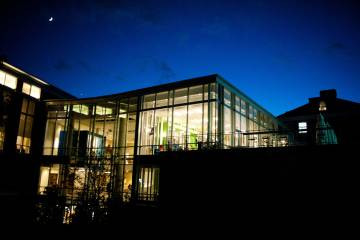As a premier research institution in the United States, Johns Hopkins University places a strong emphasis on learning and discovery. Fueling this academic mission is the extensive Johns Hopkins Library system, offering a diverse range of spaces and resources to support students and researchers alike. From the iconic Hutzler Reading Room to the innovative Brody Learning Commons, the libraries are integral to the JHU experience.
The Sheridan Libraries serve as the central academic library organization at Johns Hopkins University. This network encompasses several notable libraries, each with its unique character and strengths, contributing to the comprehensive Johns Hopkins Library system. These include the Brody Learning Commons, the Milton S. Eisenhower Library, the George Peabody Library, the John Work Garrett Library, and collections within the Albert D. Hutzler Reading Room. Collectively, these libraries house an impressive 3.7 million books and provide 24/7 access to a vast array of digital resources, including over 171,000 journals and 900,000 e-books, solidifying the Johns Hopkins Library system as a leading resource for scholarly pursuits.
Opened in 2012, the Brody Learning Commons stands as a testament to modern library design, built with the needs of contemporary students in mind. This vibrant hub is a central point for both academic work and social interaction. Inside, students find 16 group study rooms ideal for collaborative projects, a café with 75 seats for breaks and informal meetings, and a quiet reading room accommodating 100, perfect for focused study. Responding directly to student feedback, the Brody Learning Commons is characterized by abundant natural light, creating an inviting and energizing atmosphere. Reflecting a commitment to sustainability, this 24/7 facility has also earned recognition for its environmentally conscious construction and operation from the U.S. Green Building Council.
Adjacent to the Brody Learning Commons is the Milton S. Eisenhower Library, the university’s primary research library and a cornerstone of the Johns Hopkins Library system. This more traditional library is home to the university’s expert librarians, invaluable resources for navigating the vast world of information. It houses extensive stacks and a remarkable collection of rare books and manuscripts, making it one of the most frequently used buildings on the Johns Hopkins campus. The Milton S. Eisenhower Library is essential to the Johns Hopkins Library network, providing crucial research materials and expertise.
For a truly unique library experience within the Johns Hopkins Library system, the George Peabody Library, often called “the cathedral of books,” is unparalleled. Recognized as one of the most beautiful libraries globally, it holds approximately 300,000 volumes, primarily from the 18th and 19th centuries. Its breathtaking architecture features ornate, cast-iron balconies that ascend to a skylight, all above a striking black-and-white marble atrium floor. The George Peabody Library offers an inspiring and visually stunning space to engage with historical texts and research, a jewel within the Johns Hopkins Library offerings.
The Johns Hopkins Library system effectively blends tradition with innovation, providing both classic and contemporary spaces equipped with world-class resources. From rare historical texts to cutting-edge electronic databases and millions of print volumes, the university libraries empower discovery around the clock. These resources extend across all campuses and are accessible globally, solidifying the Johns Hopkins Library system’s commitment to fostering learning and research without boundaries.
 Photograph of Johns Hopkins University students and staff on the Homewood Campus
Photograph of Johns Hopkins University students and staff on the Homewood Campus
The comprehensive holdings of all libraries within the Johns Hopkins Library system are conveniently accessible through the Johns Hopkins University Libraries Catalog, providing a unified search experience for all users. This centralized catalog ensures that the vast resources of the Johns Hopkins Library are readily discoverable and available to support the diverse academic needs of the university community and beyond.



